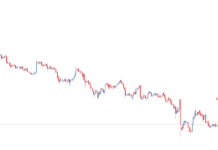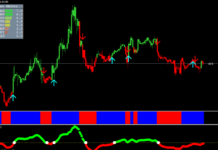Accumulation/Distribution (A/D) indicator is an effective volume indicator, developed on the base of accumulation/distribution index and Balance Volume basis. The indicator was developed by Marc Chaikin, a well-known trader. In contradistinction to B. Williams (Accumulation/Deceleration, AD) who is comparing closing/opening prices, and D. Granville (OVB) who compared previous and current closing prices, Chaikin compares the closing price with the middle of the trading range. It is worth mentioning A/D is the basis of “Chaikin Oscillator” which is also one of the more famous indicators developed by this trader.
Before reading the article and writing your questions in the comments section, I recommend to watch this video. It’s not long but covers the biggest part of questions on the topic.
Description of the Accumulation/distribution indicator
Lack of information has forced Chaikin to start working on developing his own Accumulation/Distribution formula. Most likely, the trader would have used Larry Williams’ method if the daily newspapers neatly published the opening prices at that time. However, he was forced to look for some alternatives. Swing traders need to get acquainted with this indicator’ dynamics every couple of days while positional traders use it more rarely.
A/D calculation starts with the difference calculation in the closing price and the daily minimum, from which then is subtracted the difference between the maximum and closing price. The obtained indicator is divided into the difference between the maximum and the minimum, after which it is multiplied by the trade’s volume. At the final stage, the result is summed with the Accumulation/Distribution value recorded on the previous candle, which is the indices total amount for all previous periods. The larger the volume, the stronger the indicator responds to the price movements (Picture 1).
A/Dn = ((Close-Low) — (High-Close) / (High-Low) x Volume) + A / Dn-1.
Accumulation/Distribution value is equal to the volume value when the asset closes at the trading period maximum. When the closure occurs in relative proximity to the upper extreme, we get a certain percentage of the volume index (above zero).
The volume is multiplied by a negative number from zero to one when placing next to the minimum. If the price closed exactly in the middle, the indicator value is zero. When closing at a minimum of the Accumulation/Distribution is similar to the volume with a negative number only. We’ll remind the accumulation implies the purchase of the assets by “real money” before the powerful uptrend onset. Distribution refers to the closing positions process at the time of the “bullish market” peak.

The rising line means that the accumulation process is in progress during this period. The A/D curve decline indicates a downward trend and distribution. Thus, looking at the chart, it’s possible to assess the buyers’ and sellers’ power balance in the current market in a few seconds. It is generally accepted that most closing prices are fixed near the trading period maximum during the upward trend. Connection to the trend from new players helps to increase the trade’s volume. In case of a downward trend, closing prices tend to be near the minimum, and the total volume is increasing here since the traders’ number who wish to make join the short trade is growing (Picture 2).

Thus, while using the Accumulation/Distribution indicator, it’s possible to record the trade’s volume increase, associated with buying or selling of an asset. Also, the tool helps to determine the cash flows nature. The rise of the curve indicates buyers’ financial interest increases, a drop — the seller’s dominance. The A/D chart can be used to detect the following signals:
- divergence;
- trend confirmation;
- technical analysis figures formation.
Divergence refers to the discrepancies observed in the indicator and price charts.

There is a high probability the trend starts to lose power if, while having an upward trend, the next maximum’s update is not supported by a similar movement of the Accumulation/Distribution curve (Picture 3). A reversal or correction may happen rather soon. If the discrepancy is confirmed at the next peak, it’s necessary to seriously think about opening a short position. The same situation is with the divergence while having a stable downward motion. The lack of confirmation of a new price minimum is the trend termination indicator and it’s possible to search for the moment to enter the short.
Movement is stable if vertices are updated synchronously while having an increasing trend. The situation is similar while having a falling market, but we are talking about the minima of the charts. Research of the patterns which are formed on the screen of the A/D indicator can also be useful. Double tops with triangles usually appear there earlier than on the price chart. The figures interpretation does not differ from the classical one. Also, nothing prevents the trader from using other popular graphical analysis techniques, for example, to indicate resistance/support levels.






has anyone actually measured the accuracy of these indicators? Im assuming that one indicator will have a bad accuracy reading but combine that with other indicators the percentage of accuracy goes up
Thank you! Needed to get a little clarity on the accumulation distribution line. I think I got it now.
on a longer term basis, would a good indicator be finding selloffs to be lighter in volume (line hangs around the middle) against heavier uptrend buying periods (line hangs near the top) – indicating that more money is flowing in to the company than out of it?
This indicator should be used to give you an insight on Market price movement and Volume direction at a given period
I was checking Accumulation distribution for one of most famous stock. It’s daily accumulation indicator shows a positive trend from mid Aug 2018 until today on the daily chart. If i Check the weekly chart, the accumulation shows a downtrend for the same period. How is that possible?
thanks for the knowledge, i wish i could understand it
these are very good. unlike others give great examples. Thank you